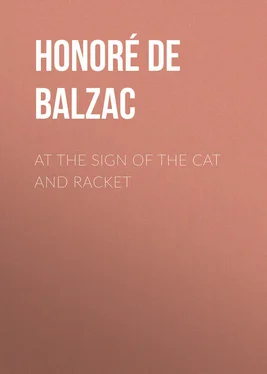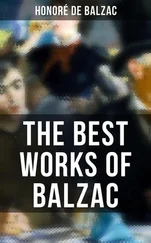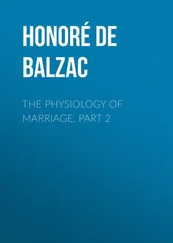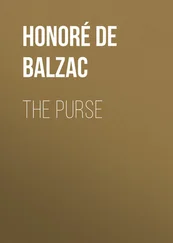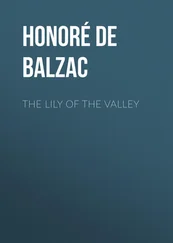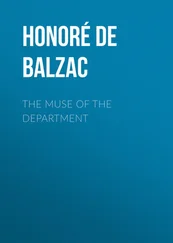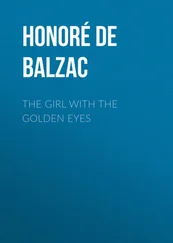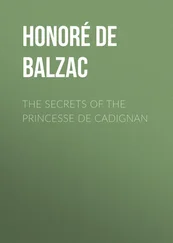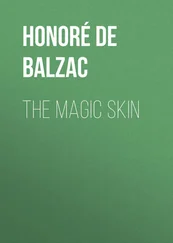Honoré Balzac - At the Sign of the Cat and Racket
Здесь есть возможность читать онлайн «Honoré Balzac - At the Sign of the Cat and Racket» — ознакомительный отрывок электронной книги совершенно бесплатно, а после прочтения отрывка купить полную версию. В некоторых случаях можно слушать аудио, скачать через торрент в формате fb2 и присутствует краткое содержание. Жанр: literature_19, foreign_antique, foreign_prose, на английском языке. Описание произведения, (предисловие) а так же отзывы посетителей доступны на портале библиотеки ЛибКат.
- Название:At the Sign of the Cat and Racket
- Автор:
- Жанр:
- Год:неизвестен
- ISBN:нет данных
- Рейтинг книги:3 / 5. Голосов: 1
-
Избранное:Добавить в избранное
- Отзывы:
-
Ваша оценка:
- 60
- 1
- 2
- 3
- 4
- 5
At the Sign of the Cat and Racket: краткое содержание, описание и аннотация
Предлагаем к чтению аннотацию, описание, краткое содержание или предисловие (зависит от того, что написал сам автор книги «At the Sign of the Cat and Racket»). Если вы не нашли необходимую информацию о книге — напишите в комментариях, мы постараемся отыскать её.
At the Sign of the Cat and Racket — читать онлайн ознакомительный отрывок
Ниже представлен текст книги, разбитый по страницам. Система сохранения места последней прочитанной страницы, позволяет с удобством читать онлайн бесплатно книгу «At the Sign of the Cat and Racket», без необходимости каждый раз заново искать на чём Вы остановились. Поставьте закладку, и сможете в любой момент перейти на страницу, на которой закончили чтение.
Интервал:
Закладка:
Honoré de Balzac
At the Sign of the Cat and Racket
AT THE SIGN OF THE CAT AND RACKET
Half-way down the Rue Saint-Denis, almost at the corner of the Rue du Petit-Lion, there stood formerly one of those delightful houses which enable historians to reconstruct old Paris by analogy. The threatening walls of this tumbledown abode seemed to have been decorated with hieroglyphics. For what other name could the passer-by give to the Xs and Vs which the horizontal or diagonal timbers traced on the front, outlined by little parallel cracks in the plaster? It was evident that every beam quivered in its mortices at the passing of the lightest vehicle. This venerable structure was crowned by a triangular roof of which no example will, ere long, be seen in Paris. This covering, warped by the extremes of the Paris climate, projected three feet over the roadway, as much to protect the threshold from the rainfall as to shelter the wall of a loft and its sill-less dormer-window. This upper story was built of planks, overlapping each other like slates, in order, no doubt, not to overweight the frail house.
One rainy morning in the month of March, a young man, carefully wrapped in his cloak, stood under the awning of a shop opposite this old house, which he was studying with the enthusiasm of an antiquary. In point of fact, this relic of the civic life of the sixteenth century offered more than one problem to the consideration of an observer. Each story presented some singularity; on the first floor four tall, narrow windows, close together, were filled as to the lower panes with boards, so as to produce the doubtful light by which a clever salesman can ascribe to his goods the color his customers inquire for. The young man seemed very scornful of this part of the house; his eyes had not yet rested on it. The windows of the second floor, where the Venetian blinds were drawn up, revealing little dingy muslin curtains behind the large Bohemian glass panes, did not interest him either. His attention was attracted to the third floor, to the modest sash-frames of wood, so clumsily wrought that they might have found a place in the Museum of Arts and Crafts to illustrate the early efforts of French carpentry. These windows were glazed with small squares of glass so green that, but for his good eyes, the young man could not have seen the blue-checked cotton curtains which screened the mysteries of the room from profane eyes. Now and then the watcher, weary of his fruitless contemplation, or of the silence in which the house was buried, like the whole neighborhood, dropped his eyes towards the lower regions. An involuntary smile parted his lips each time he looked at the shop, where, in fact, there were some laughable details.
A formidable wooden beam, resting on four pillars, which appeared to have bent under the weight of the decrepit house, had been encrusted with as many coats of different paint as there are of rouge on an old duchess’ cheek. In the middle of this broad and fantastically carved joist there was an old painting representing a cat playing rackets. This picture was what moved the young man to mirth. But it must be said that the wittiest of modern painters could not invent so comical a caricature. The animal held in one of its forepaws a racket as big as itself, and stood on its hind legs to aim at hitting an enormous ball, returned by a man in a fine embroidered coat. Drawing, color, and accessories, all were treated in such a way as to suggest that the artist had meant to make game of the shop-owner and of the passing observer. Time, while impairing this artless painting, had made it yet more grotesque by introducing some uncertain features which must have puzzled the conscientious idler. For instance, the cat’s tail had been eaten into in such a way that it might now have been taken for the figure of a spectator – so long, and thick, and furry were the tails of our forefathers’ cats. To the right of the picture, on an azure field which ill-disguised the decay of the wood, might be read the name “Guillaume,” and to the left, “Successor to Master Chevrel.” Sun and rain had worn away most of the gilding parsimoniously applied to the letters of this superscription, in which the Us and Vs had changed places in obedience to the laws of old-world orthography.
To quench the pride of those who believe that the world is growing cleverer day by day, and that modern humbug surpasses everything, it may be observed that these signs, of which the origin seems so whimsical to many Paris merchants, are the dead pictures of once living pictures by which our roguish ancestors contrived to tempt customers into their houses. Thus the Spinning Sow, the Green Monkey, and others, were animals in cages whose skills astonished the passer-by, and whose accomplishments prove the patience of the fifteenth-century artisan. Such curiosities did more to enrich their fortunate owners than the signs of “Providence,” “Good-faith,” “Grace of God,” and “Decapitation of John the Baptist,” which may still be seen in the Rue Saint-Denis.
However, our stranger was certainly not standing there to admire the cat, which a minute’s attention sufficed to stamp on his memory. The young man himself had his peculiarities. His cloak, folded after the manner of an antique drapery, showed a smart pair of shoes, all the more remarkable in the midst of the Paris mud, because he wore white silk stockings, on which the splashes betrayed his impatience. He had just come, no doubt, from a wedding or a ball; for at this early hour he had in his hand a pair of white gloves, and his black hair, now out of curl, and flowing over his shoulders, showed that it had been dressed a la Caracalla , a fashion introduced as much by David’s school of painting as by the mania for Greek and Roman styles which characterized the early years of this century.
In spite of the noise made by a few market gardeners, who, being late, rattled past towards the great market-place at a gallop, the busy street lay in a stillness of which the magic charm is known only to those who have wandered through deserted Paris at the hours when its roar, hushed for a moment, rises and spreads in the distance like the great voice of the sea. This strange young man must have seemed as curious to the shopkeeping folk of the “Cat and Racket” as the “Cat and Racket” was to him. A dazzlingly white cravat made his anxious face look even paler than it really was. The fire that flashed in his black eyes, gloomy and sparkling by turns, was in harmony with the singular outline of his features, with his wide, flexible mouth, hardened into a smile. His forehead, knit with violent annoyance, had a stamp of doom. Is not the forehead the most prophetic feature of a man? When the stranger’s brow expressed passion the furrows formed in it were terrible in their strength and energy; but when he recovered his calmness, so easily upset, it beamed with a luminous grace which gave great attractiveness to a countenance in which joy, grief, love, anger, or scorn blazed out so contagiously that the coldest man could not fail to be impressed.
He was so thoroughly vexed by the time when the dormer-window of the loft was suddenly flung open, that he did not observe the apparition of three laughing faces, pink and white and chubby, but as vulgar as the face of Commerce as it is seen in sculpture on certain monuments. These three faces, framed by the window, recalled the puffy cherubs floating among the clouds that surround God the Father. The apprentices snuffed up the exhalations of the street with an eagerness that showed how hot and poisonous the atmosphere of their garret must be. After pointing to the singular sentinel, the most jovial, as he seemed, of the apprentices retired and came back holding an instrument whose hard metal pipe is now superseded by a leather tube; and they all grinned with mischief as they looked down on the loiterer, and sprinkled him with a fine white shower of which the scent proved that three chins had just been shaved. Standing on tiptoe, in the farthest corner of their loft, to enjoy their victim’s rage, the lads ceased laughing on seeing the haughty indifference with which the young man shook his cloak, and the intense contempt expressed by his face as he glanced up at the empty window-frame.
Читать дальшеИнтервал:
Закладка:
Похожие книги на «At the Sign of the Cat and Racket»
Представляем Вашему вниманию похожие книги на «At the Sign of the Cat and Racket» списком для выбора. Мы отобрали схожую по названию и смыслу литературу в надежде предоставить читателям больше вариантов отыскать новые, интересные, ещё непрочитанные произведения.
Обсуждение, отзывы о книге «At the Sign of the Cat and Racket» и просто собственные мнения читателей. Оставьте ваши комментарии, напишите, что Вы думаете о произведении, его смысле или главных героях. Укажите что конкретно понравилось, а что нет, и почему Вы так считаете.
